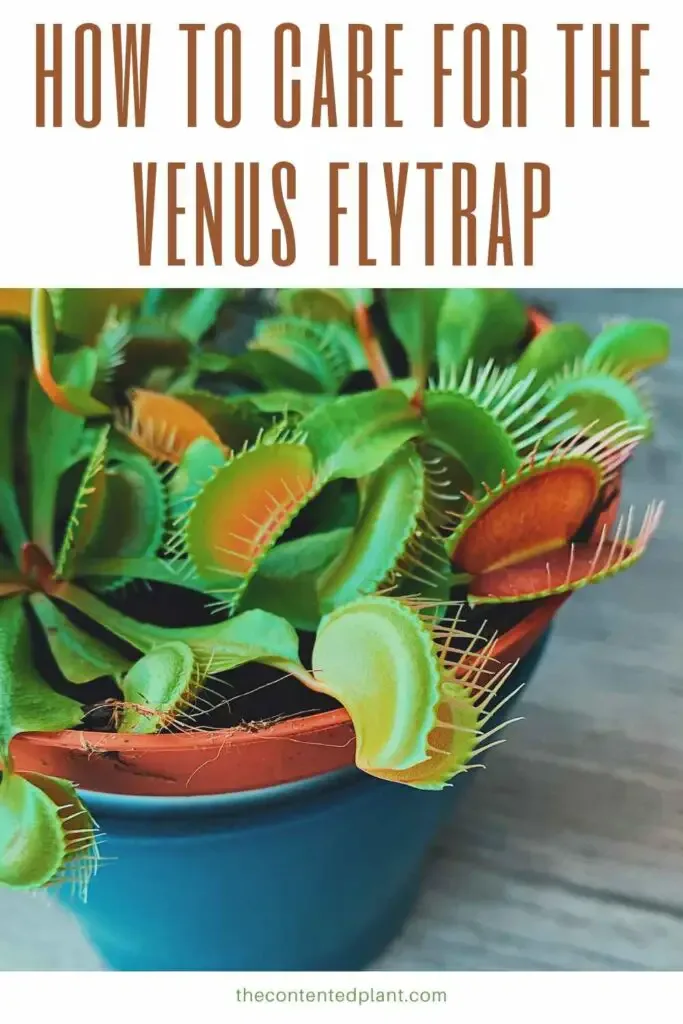The unique Venus Flytrap plant (Dionaea muscipula) is a fun option for plant owners due to its carnivorous nature and the eye catching shape of the leaves. Keep in mind, this plant is not a beginner friendly option. Venus Fly Traps are known for being challenging to care for; requiring very specific care and environments to thrive.
This plant is a member of the sundew plant family, a genus of at least 194 carnivorous plants known for trapping and ingesting small insects using the ‘sticky’ glands that cover their intriguing leaves. Think of them as natures flypaper; once the prey is stuck the venus will close and begin digesting the insect. They reopen and use a nectar as bait to lure another once they have finished.
Interestingly enough, the venus flytrap is native only to coastal regions of North and South Carolina in the United States. They are considered ‘at risk’ and there are penalties for sourcing them from the wild. This plant should only be sourced from credible nurseries and sellers.

What is the ‘trap’ of the Venus Flytrap?
The hinged trap of this plant is considered a modified leaf. It moves to close and trap prey in order to digest them, using a nectar as bait and sticky glands to trap them once they land. A thriving flytrap can have as many as eight traps that grow from the flat stems of the plant.
The ‘leaves’ or traps of this plant are sometimes referred to as lips due to the correlation of a mouth eating it’s prey. It is truly a unique and fascinating plant to add to your collection, and can come in handy as a natural insect trap for your home.
A quick look at Venus Flytrap care
| Light + Sun Exposure | Bright, indirect sunlight for 12 hours daily with 4 hours being direct sunlight |
| Soil Type + PH | Wet, acidic, nutrient weak soil from a 1:1 mixture of peat moss and perlite |
| Container | Plastic or fiberglass pots that allow a 2″ radius around the rhizome work well |
| Watering | Mineral free water such as distilled is required, and during the growing season it is important to keep the soil moist at all times using a bottom watering method |
| Temp + Humidity | Between 70-95 degrees F with moderate humidity levels above 50% |
| Food | They receive their bulk nutrients from the insects they consume during the growing season and don’t require any additional fertilizer |
| Repotting | Every 6-12 months is required since they need fresh, low chemical soil |
| Maturity | They stay relatively small only reaching 6-12″ in height and 6-9″ in width |
What makes the Venus Flytrap difficult to care for?
Though the Venus Flytrap care is no more challenging than other houseplants to maintain, it does require very specific conditions, and a knowledge of its growth habits in order to successfully grow this plant (similar to the Calathea plants)
From specific soil needs to twice yearly repotting; respecting the dormancy period, and providing adequate light, your Venus Fly Trap has a finicky nature that can be demanding for some plant owners. More specifically the watering needs of a flytrap plant can be difficult to balance.
The Venus will require constant moisture during the growing season. Bottom watering is best so as to avoid mineral build up in the soil. Rainwater is preferred, but distilled water can also be used. This plant needs very minimal nutrients and minerals, so it is essential that the soil and watering specifications are followed carefully.
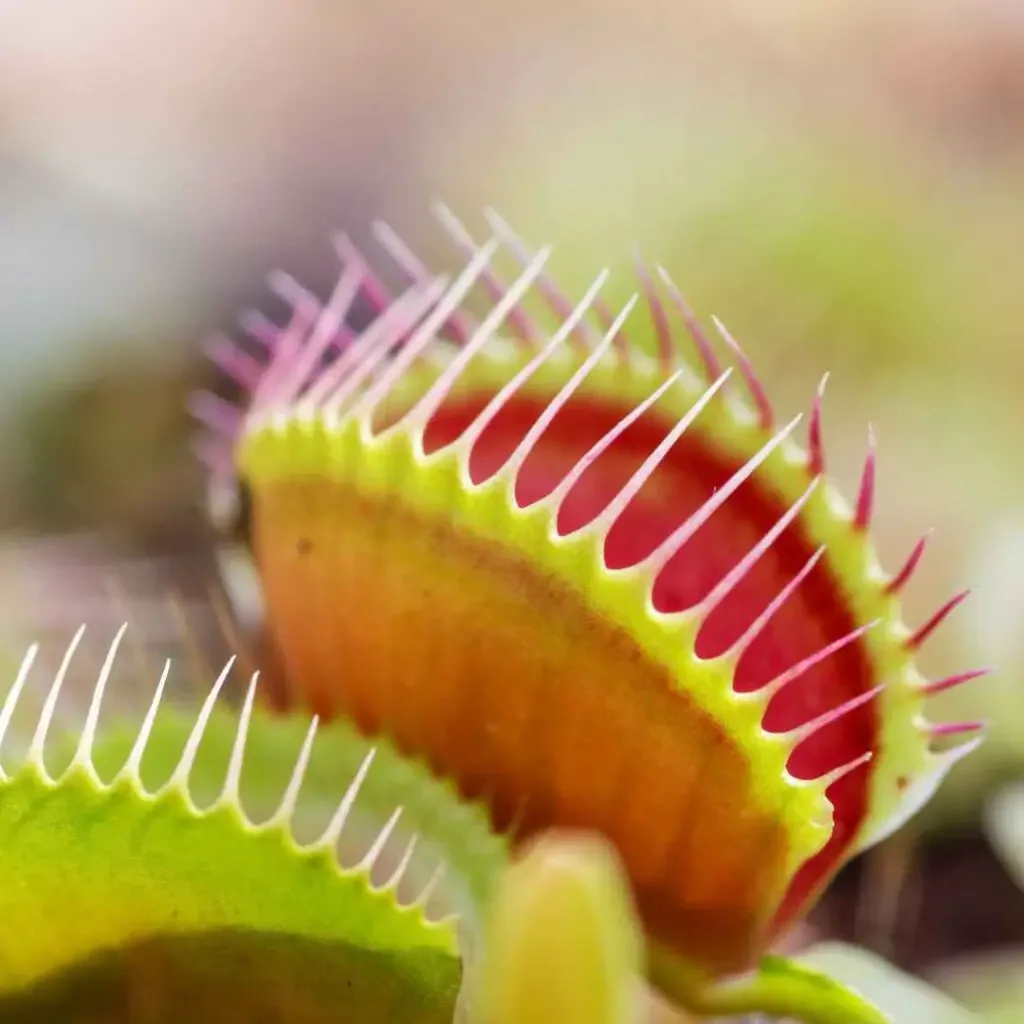
Did my Venus Flytrap plant die?
One of the most confusing and worrisome things about the nature of the Venus Flytrap is its period of dormancy during the non growing season. Beginning in fall the plant will lose its leaves and appear dead, making many worry that the plant has been lost. However, it is still alive beneath the soil in its rhizomes and will ‘come back to life’ once the dormancy period is over.
It is important to respect the plants need for dormancy and not disturb its natural rhythms with artificial or additional light. Rather, move the plant to a cool area of your home and allow it the rest that it needs. It is also critical to reduce the watering during this period. Only water the Venus Flytrap to keep the soil from completely drying out. In early spring when you see the plant begin to emerge and ‘regrow’ you will resume the regular watering schedule that it requires for constant moisture.
Do I need to fertilize or feed my Venus Flytrap plant?
Another tricky aspect of the Venus Flytrap is understanding its unique needs, or lack of, when it comes to feeding this plant. You do not want to fertilize the Flytrap plant because it requires very low nutrients in its soil, and an over abundance will kill the plant.
Venus Flytraps that live indoors will need to be ‘fed’ an adequate amount of insects for survival
Growing the Venus Flytrap indoors will likely mean you will need to provide it with dead or live insects since that is its nutrient source. The trick is, a Venus Flytrap will not consume any insects unless and until it is healthy and well established. So, it is vital you prioritize creating the right growing conditions and environment for this plant.
A healthy and thriving Venus plant can be fed dead or live insects occasionally. Gently drop the insects into the trap and stimulate the trigger hairs that signal the plant to close and consume the prey. You can do this with your fingers, or very carefully with a toothpick, or tweezers.
It is vital that you repot your Venus Flytrap regularly
Another ‘high maintenance’ aspect of the Venus Flytrap is its need for regular repotting, even after they have reached full maturation. It is a constant requirement for this finicky plant because they need such a specific balance of low nutrients in their soil with minimal build up, and a fresh bed to live in.
A mixture of peat moss and perlite are great because they are light, breathable, and low in nutrients. Sandy soils with peat moss can also be used, as well as bark, sawdust, and wood fibers that have not been chemically treated. A mixture of any of these can also provide a wonderful growing medium for the Flytrap.
Plastic and fiberglass pots are best for this plant. Stay away from ceramic, glass, or terrarium style containers as they are heavy and not breathable which can lead to root rot and mineral build up in the soil. A radius of at least 2″ around the rhizome is important for the Flytrap, and a depth of about 4″ is great.

Propagation of the Venus Flytrap is best done by rhizome division
Propagation is best done in early spring when the Venus Flytrap is coming out of dormancy and sending up young offshoots.
- Using a sharp knife or pruners, cut off the shoot making sure there are roots attached
- Fill a pot roughly 4″ wide and 6″ deep with a fresh peat based growing medium
- Poke a hole in the center of the soil, place the roots of the shoot in the soil, gently cover with the soil and water very well keeping the soil moist at all times
- Place the young plant in an area where it will receive indirect light constantly, but protect it from direct light until it has become established with a stronger root system
Because the Venus Flytrap is considered ‘at risk’ be sure you only source from credible nurseries and growers
Sourcing the Venus Flytrap from the wild is penalized due to an over abundance of harvesting. Make sure you are sourcing from nurseries and growers that have propagated their own Flytrap plants, and are knowledgeable in the care required. You can even find different varieties of Venus Flytraps that have been cultivated over the years, so be sure you are sourcing from someone who is knowledgeable about the different varieties that are out there.
We always encourage you to buy local whenever possible, but if it is not possible, or you are not confident in the knowledge of local options, Etsy is another fantastic source. There are many different plant shops that are run by passionate and trustworthy horticulturists, just be sure to do your research and read reviews.
Etsy can be a fantastic source for purchasing a healthy Venus Flytrap, and you can support small business shops.
Purchase live venus flytraps on etsy
Follow this link to explore the shops that sell many varieties of this genus.
Is the Venus Flytrap a dangerous plant?
The Venus Flytrap is not dangerous to humans or pets as it is non toxic and not sharp in any way. It is best to leave the traps of the plant alone so as not to stress the plant, or cause it to expend extra energy necessary for it to feed.
Because it is an insect eating plant do I need to worry about pests or disease?
Although the Venus Flytrap is an insect eating plant, it is still at risk for certain pests like aphids and fungus gnats. These pests are simply too small for the Venus to consume, and can invade and feed off of the plant. Be sure to inspect the plant regularly for signs of infestation, and use and insecticidal spray to prevent a takeover.
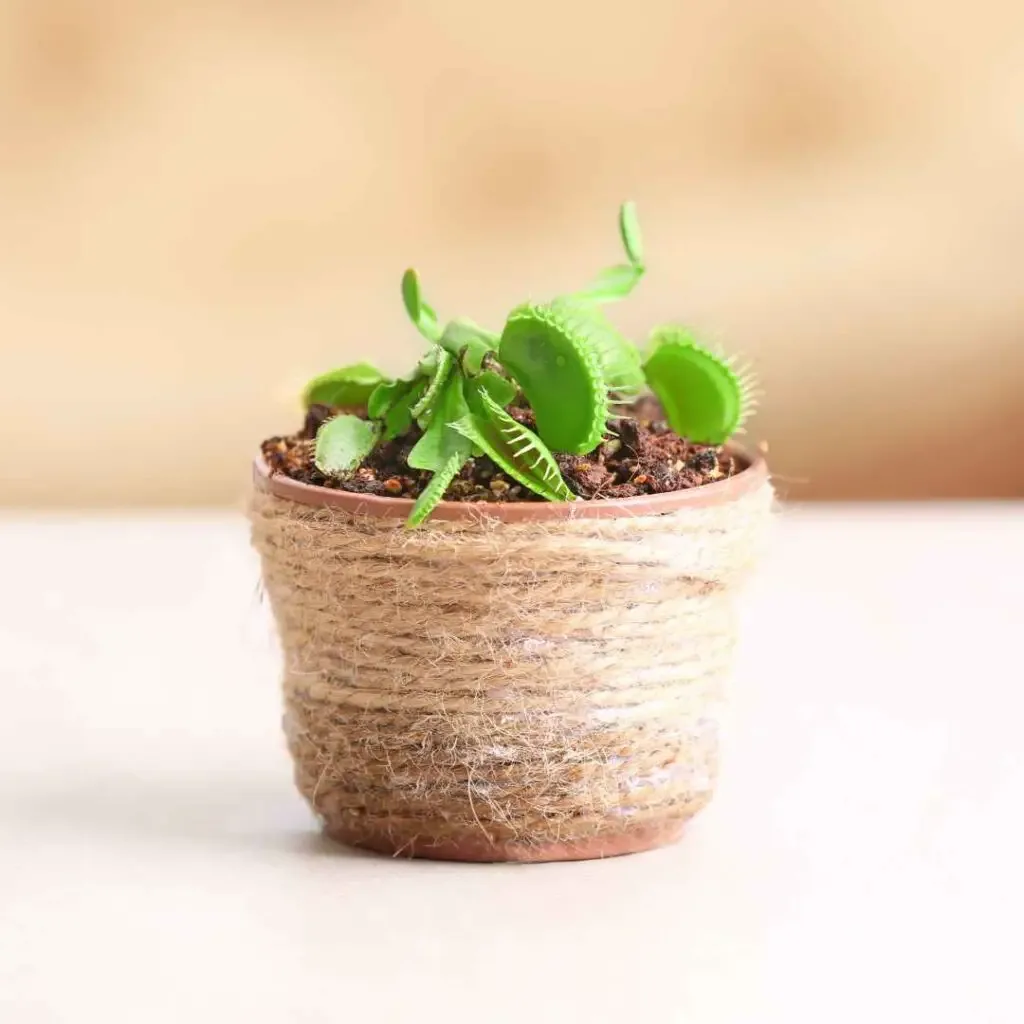
The unique nature of the Venus Flytrap makes it a fun and attention grabbing houseplant that many enjoy. Although it has some challenges to it, with the knowledge and commitment necessary it can provide an interesting addition to your home.
If you are looking for plants with a similar look, but that are a bit easier to care for, be sure to check out some of these succulents that we have featured.

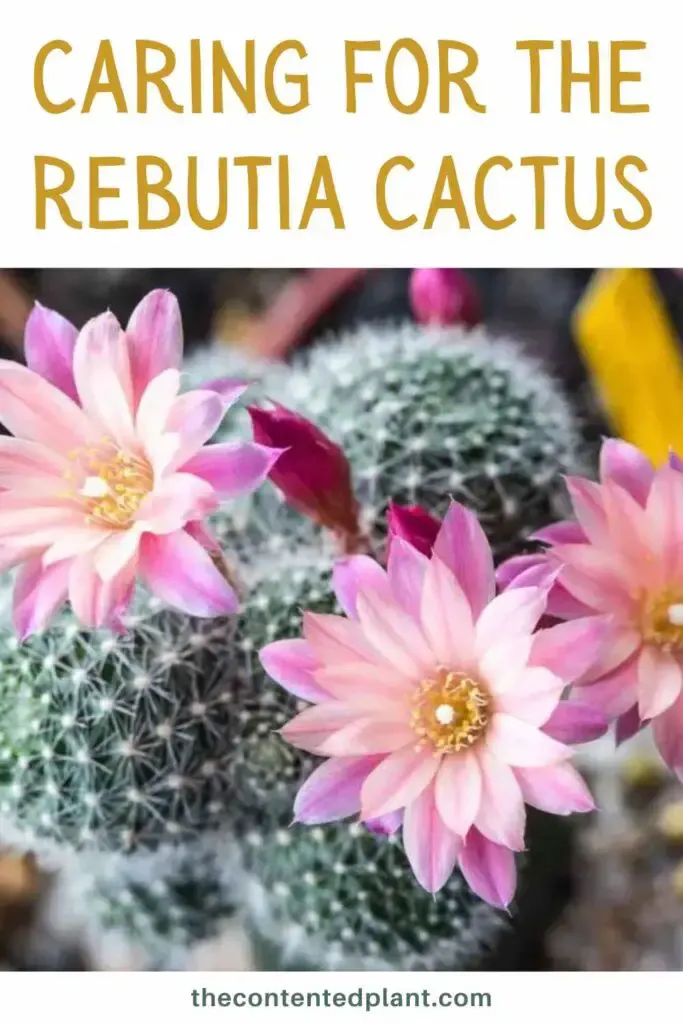
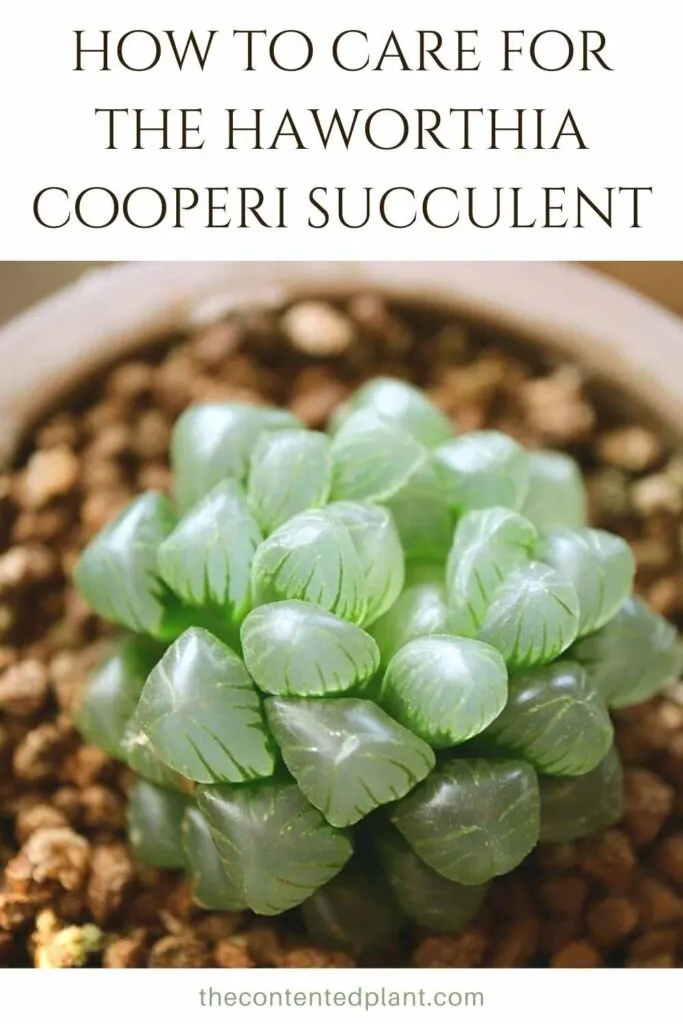
Follow Us:
Find us on YouTube, Instagram , Pinterest and TikTok! We love to Plant chat. We also comment, like and occasionally share your content to our daily stories. We’d love to see your plants. Share your joy in your houseplants. Happy Planting!
